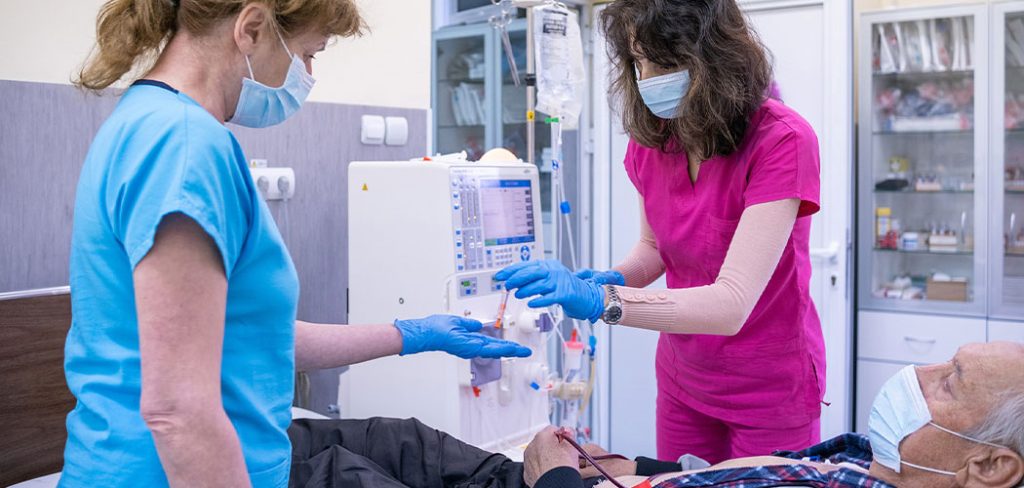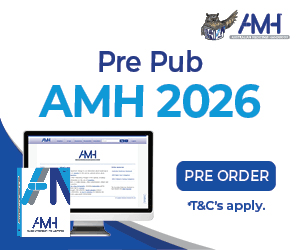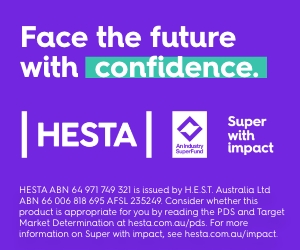Chronic kidney disease (CKD) in Australia affects one in 10 people over the age of 18.1,2 There has been a 30% growth in people receiving Kidney Replacement Therapy (KRT) in the last decade3 for which specialist nursing care is required.
Demand for nephrology nurses is increasing aligning with the increased case load and globally there is a shortage of trained nephrology nurses able to provide this care.4,5 Staff shortages are leading to increased pressure to undertake overtime and extra shifts to meet the case load need5,6 which ultimately contributes to burnout and further negative impact on the workforce.7
Nephrology nursing is specialty practice often independent of physician oversight and the workforce is considered highly skilled, however the workforce is also ageing and careful planning is needed to assure the future of skilled nephrology nursing care.8,9
BACKGROUND
In 2022, SA Health introduced the Clinical Specialisation Program, which offered up to 1,000 scholarships per year to nursing staff to undertake a postgraduate (PG) program of study at the University of South Australia. As part of this program, and to address workforce shortages, a nephrology nursing PG course of study was developed which has 13 weeks theoretical content covering all aspects of kidney care. The course was a novel co-design by University academics including three with a nephrology nursing background and a clinical advisory group consisting of a large group of senior clinicians in SA Health. However, subsequent to the move to online education at university level a clear need was to rejuvenate the clinical training in the renal unit setting to create a synergy between the theory and clinical components of training.
AIM
The aim of this review is to collate the evidence on best practice models for postgraduate nurse training for advanced practice and clinical specialisation to inform the rejuvenation of nephrology nurse clinical training at a large renal service with oversight for multiple distinct renal units.
METHOD
This scoping review uses the framework recommended by the Joanna Briggs Institute drawn from the work of Arksey and O’Malley10 and Levac, Colquhoun and O’Brien.11,12
STAGE 1 IDENTIFY THE RESEARCH QUESTION
We proposed the following research question; What does a high-quality post graduate training program for clinical specialisation look like?
STAGE 2 IDENTIFYING THE RELEVANT STUDIES
In November 2023* a comprehensive search of the CINAHL, Ovid (Emcare) and Medline data bases was conducted. The key word strings included nephrology/renal, nurs*, train* and educ* and nurs*, educ* and postgraduate. Six hundred and seventy six papers were retrieved for consideration,13 duplicates were removed. Of the remaining 663 papers retrieved, screening removed 641 that were considered irrelevant to the aims of this review.
*The literature search was repeated in January 2025 prior to publication but no new relevant papers were found.
STAGE 3 STUDY SELECTION
The final 22 papers identified were imported into Covidence™ for screening by the two researchers. Following this screening a further three papers were excluded as they were considered not relevant to meet the aims of this review, and 19 papers proceeded to full text review and are incorporated in this discussion.
STAGE 4 CHARTING THE DATA
The data from the literature was extracted by author, year, country of origin, issue, setting and key findings.
STAGE 5 COLLATING, SUMMARISING AND REPORTING THE RESULTS
With regard to the types of manuscripts included in the review five were from Australia or New Zealand, three were from Europe and the remainder originated from the United States. From the papers included eight were nephrology specific and the others primarily focused on the Nurse Practitioner (NP) role.
RESULTS
Nephrology specific
An Australian study found that the most desirable PG qualification for nephrology nursing is the graduate certificate, but for senior leaders in nephrology it is a Master’s degree.13 Barriers to achieving this are funding, scholarships, study leave, career opportunities and recognition of the higher study achievement.13 Nurses generally also believe that education needs to be firmly grounded in clinical practice and a synergy between tertiary and hospital programs enhances theoretical knowledge and critical thinking.14 However, since PG education moved from the hospital setting to the tertiary setting the ideal timing, teaching and learning approaches are not clear in terms of clinical and academic qualifications for teaching staff, assessment design and the level of PG qualification awarded.14 Most tertiary educators agree it is important to include clinical input into course design, teaching, evaluation, and assessment but also academic input to ensure the program is academically robust.14
For nephrology nurses, professional certification demonstrates the highest level of knowledge and experience and allows the public to recognise safe and quality care15,16 Certified nurses have greater autonomy in decision-making, empowerment over practice and credibility which in turn has a positive impact on the workplace culture.15 Health Workforce New Zealand has long funded post graduate education and evidence suggests that professional development leads to improved clinical practice and clinical decision making.17
In considering best practice models to address critical shortages in nephrology nursing a US based health service introduced the Nephrology Nurse Residency Program to train newly graduated nurses to perform HD.18 The structured program consisted of 12 weeks full time (paid) with buddy shifts in tandem with education days for the whole cohort. A similar US based program of dialysis training for critical care staff in ICU was developed to address the KRT workforce shortages consisting of training days using the American Nephrology Nurses Association (ANNAS) core curriculum for Nephrology Nursing and 64 hours of preceptor performance of HD.19 Similar to the ANNAS the European Dialysis and Transplant Nurses Association and a Swedish Delphi study have also described base core curriculum as educational tools to integrate into training programs.20,21
Outside of training for HD it has been recognised that despite the International Society for Peritoneal Dialysis recommendations on uniform training of Peritoneal Dialysis (PD) nurses to train PD patients no such program of education exists and there continues to be wide variation, lack of a proper syllabus and several nurses with differing styles training the one patient.20,21
EVIDENCE DRAWN FROM OTHER SPECIALTIES
Renal specific care makes up a very small proportion of undergraduate education and yet one of the most frequent strategies to recruit to the specialty is through the clinical placement. For example, to address workforce shortages in oncology nursing a novel 10 week fully paid fellowship was offered to undergraduate nurses to stimulate and excite them about a career in oncology nursing.23
Another option is a transition to specialty practice program which has been successfully trialled in the ICU setting. Participants drawn from medical and surgical general ward areas complete an in-house program comprising of study days, clinical support, online learning and didactic content delivery, orientation and preceptorship.24 Essentially an in-house development program however subsequently most participants ultimately went on to complete formal PG training. Bridging the gap between specialty clinical practice and PG education allowed the ICU to meet the Australian College of Critical Care Nurses recommendation of ICU nurses having a qualification from the higher education sector.
THE NURSE PRACTITIONER (NP)
A successful combination of theory and clinical practice model is the development of an advanced practice nurse through hospital focussed training and Master’s level curriculum used in the United States.25 Similarly clinical nurse specialists are Master’s level prepared with advanced responsibilities and an expanded scope of practice in Europe.26 The combined academic pathway set core competencies as patient competency, clinical nursing leadership, organisational competency and scholarship competencies to standardise the role.26
However as in Australia there is no consistent educational model for the NP in nephrology which evolves through a generic NP Master’s degree followed by clinical orientation and mentorship in the US.27 A preferable model would be to build on the PG certification in nephrology nursing, advancing to a clinical specialist at diploma level, and ultimately the NP, offering different options for staff training through an evolution or staged approach.

An emerging trend in NP education is a post graduate residency in the first year of practice that involves a partnership between the healthcare facility and the tertiary sector focussing on quality and safety, leadership and clinical scholarship and a curriculum based on achieving competencies.28 Likewise, the advanced practice nurse
fellowship which is a ‘curriculum to career program’ acts in a similar way to the medical residency with a dedicated mentor and practice based support.29
Programs such as these must include accreditation in the plan to ‘standardise competencies in transition to practice, clinical immersion, professional identity, resiliency training, increased skills competencies, advanced knowledge and a process of self-evaluation’.29
The Australian NP standards define the key measures of competence and capability. One way to demonstrate this is by the use of an ePortfolio with a reflective commentary drawing the evidence together as a bridge between theory and practice.30 Modern learners are ‘digital natives’ meaning blended learning with components both online and traditional bedside didactic methods offers advantages over one method alone.31
Nephrology nurse training needs an online component as well as in person segments to be competitive and stimulating.27 Haemodialysis is particularly suited to this style of teaching moving HD adequacy, urea, and vascular access to an interactive online format with narrated videos and teaching how to perform HD at the bedside.31 Nephrology nurse education could model the Australian NP standards through experiential learning and the development of an ePortfolio incorporating clinical science, clinical decision making, assessment, diagnostics and pharmacology, evidence based practice and models of practice to guide the student on understanding their expanded scope of practice.30
DISCUSSION
There is currently a clear gap in a thoroughly considered immersive clinical and academic training model for nephrology nursing. Whilst the new clinical specialisation tertiary program in South Australia is likely to attract much needed new nursing staff to renal care, to truly optimise the potential, the new workforce will need to be trained and upskilled clinically to translate the theory into practice. Nephrology nurses prefer a model of training combining theory and clinical training with an emphasis on hospital based competency development.32 The current Australian and New Zealand dialysis workforce has shown some growth but this is known to not be at the same rate as patient growth and dialysis units are increasingly ‘relaying on the good will’ of current staff to fix staff shortages through overtime and extra shifts.33 This practice is contributing to workforce burnout, with the current nephrology nursing workforce reporting moderate levels of burnout that are higher than a global study of nursing burnout7 highlighting the pressure this workforce is currently under.
CONCLUSION
This review of the evidence has found several initiatives to increase clinical competence and leadership for the PG nurse which could be applied to developing a robust clinical training program in nephrology. One that integrates theory into practice and develops nephrology nurses that are critical thinkers who build competency in advanced practice and collate evidence to corroborate this through the use of an ePortfolio. Addressing workforce shortages in nephrology care is now a national imperative and it is hoped that the body of work being developed in South Australia can be used to inform other health services in regard to training the nephrology nurse.
References
- Kidney Health Australia. Chronic Kidney Disease Management in Primary Care. 4th ed. Melbourne: Kidney Health Australia 2020.
- Australian Institute of Health and Welfare. 2021.
- Australia and New Zealand Dialysis and Transplant Registry. 45th Annual Report. South Australia; 2022.
- Wolfe WA. Are word-of-mouth communications contributing to a shortage of nephrology nurses? Nephrology Nursing Journal. 2014;41(4):371- 8.
- Boyle S, Washington R, McCann P, Koul S, McLarney B, Gadegbeku CA. The Nephrology Nursing Shortage:Insights from a pandemic American Journal of Kidney Disease. 2022;79(1):113-6.
- Hill K, Neylon K, Gunn K, Jesudason S, Sharplin G, Britton A, et al. Sustaining the renal nursing workforce. Renal Society of Australasia journal. 2021;17(2):39-45.
- Hill K, Neylon K, Gunn K, Sharplin G, Eckert M. Understanding burnout in the current nephrology nursing workforce and health service ‘magnet’ qualities that may help address it: a discreet choice experiment. Renal Society of Australasia Journal. 2023.
- Doss-McQuitly SJ. Assuring the Next Generation of Nephrology Nurses. Nephrology Nursing Journal. 2017;44(2):111- 2.
- Bonner A, Douglas B, Brown L, Harvie B, Lucas A, Tomlins M, et al. Understanding the practice patterns of nephrology nurse practitioners in Australia. Journal of renal care. 2023;49(4):278-87.
- Arksey H, O’Malley L. Scoping studies: towards a methodological framework. International journal of social research methodology. 2005;8(1):19-32.
- Peters MDJ GC, McInerney P, Munn Z, Tricco AC, Khalil, H. Chapter 11: Scoping Reviews JBI Manual for Evidence Synthesis 2020
- Levac D, Colquhoun H, O’Brien KK. Scoping studies: Advancing the methodology. Implementation science : IS. 2010;5(1):69-.
- Tranter S, Westgarth F, Kemp J, Macneil JWH. The New South Wales renal nursing education survey.(Survey)(Brief article). Renal Society of Australasia journal. 2010;6(2):67.
- Hardcastle JE. ‘Back to the bedside’: Graduate level education in critical care. Nurse education in practice. 2008;8(1):46-53.
- Ducko JI, Stewart S. The Effect of Peer-to-Peer Education about the Significance of Specialty Certification on Empowering Nurses Working in Dialysis. Nephrology nursing journal Journal of the American Nephrology Nurses’ Association. 2022;49(3):241-54.
- Wiseman KC. Nephrology Certification: What Is It? Nephrology Nursing Journal. 2013;40(3):241-6.
- Barnhill D, McKillop A, Aspinall C. The impact of postgraduate education on registered nurses working in acute care. Nursing praxis in New Zealand inc. 2012;28(2):27-36.
- Hudson-Weires E, Fleming P, Hall M. The Development and Implementation of a New Graduate Registered Nurse Nephrology Nurse Residency Program in Acute Hemodialysis. Nephrology nursing journal : Journal of the American Nephrology Nurses’ Association. 2020;47(5):429-36.
- Smith N. An Innovative Approach to Integrating Nephrology Nursing into Acute and Critical Care. Nephrology Nursing Journal. 2022;49(5):397-403.
- Peters A. Supporting and retaining nephrology nurses new to the peritoneal dialysis specialty. Nephrology nursing journal : Journal of the American Nephrology Nurses’ Association. 2013;40(1):21-3.
- Lindberg M, Lundström-Landegren K, Johansson P, Lidén S, Holm U. Competencies for practice in renal care: A national Delphi study Journal of renal care. 2012;38(2):69-75.
- Hoekstra B, Amiri F, Beenen S, Winkels B, Leeuwen M, Hesseling L, et al. Training and education, what has changed this last decade? Journal of renal care. 2021;47(4):250-4.
- Coakley A, Ghilono C. A fellowship program preparing students for employment as new graduate nurses in oncology nursing. Creative Nursing. 2009;15(1).
- Madhuvu AE, Plummer V, Morphet J. An exploration of participants’ experience of an intensive care nursing transition to specialty practice program. Australian critical care. 2018;31(5):311-6.
- Bryant SE. Filling the gaps: Preparing nurse practitioners for hospitalist practice. Journal of the American Association of Nurse Practitioners. 2018;30(1):4-9.
- Jokiniemi K, Hølge‐Hazelton B, Kristofersson GK, Frederiksen K, Kilpatrick K, Mikkonen S. Core competencies of clinical nurse specialists: A comparison across three Nordic countries. Journal of clinical nursing. 2021;30(23-24):3601-10.
- Sears A, Davis J, Zuber K. Post graduate education and training for the nephrology physician assistants and nurse practitioners. Advancing Chronic Kidney Disease. 2022;29(6):534-8.
- McGuinness TM, Shirey MR, Cleveland C, Richardson J, Campbell R, Harper DC. An Innovative Approach for Graduate Education for Psychiatric Nurse Practitioners. Journal of professional nursing. 2020;36(6):526-30.
- Goodwin M, Fingerhood M, Slade E, Davidson P. Development of an innovative curriculum-to-career transition program for nurse practitioners in primary care. Nursing outlook. 2021;69(3):425-34.
- Anderson D, Gardner G, Ramsbotham J, Tones M. E-portfolios: Developing Nurse Practitioner Competence and Capability. Australian Journal of Advanced Nursing. 2009;26(4):70-6.
- Krishnan N. A hemodialysis curriculum for nephrology fellows using a blended learning approach: best of both worlds? J Nephrol. 2021;34(5):1697-700.
- Hill K, Neylon K, Gunn K, Sharplin G, Eckert M. The Australian and New Zealand nephrology nursing workforce: clinical pressure and organisational culture. Contemporary Nurse. 2023:1-9.
- Schuck KE, Holt SG, Hosking J, McNeill L, Bennett P. The Australian and New Zealand dialysis workforce study 2021. Renal Society of Australasia journal. 2023;19(2):100-7.
Author
Dr Kathy Hill PhD MPH Grad Cert (Neph) BN RN, Lecturer & Academic Integrity Officer, UniSA Clinical & Health Sciences, University of South Australia








